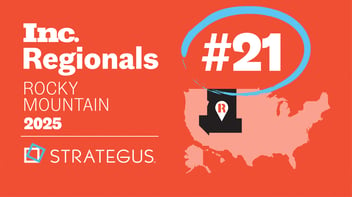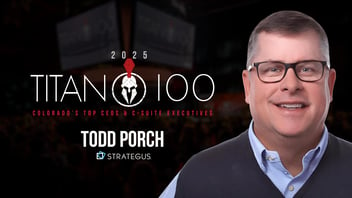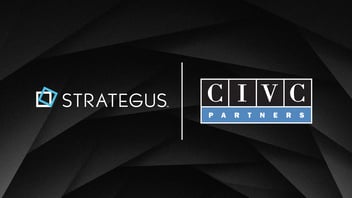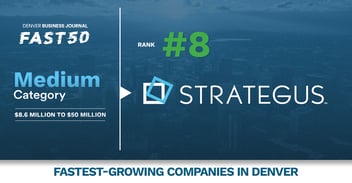- Home
- Company News
- What Marketers Can Learn About CTV for the Midterm Elections — and Their Own Campaigns
What Marketers Can Learn About CTV for the Midterm Elections — and Their Own Campaigns
 Andy Dixon
Andy Dixon
3 minutes read

In the weeks following an election cycle, campaigns and pundits conduct exhaustive post-mortems to better understand what made the difference between winning and losing efforts.
In 2022, representatives across the country will seek to learn from 2021’s state and local elections. Will campaign spending continue to increase? Could polling misses, like those that took place in New Jersey and Virginia, be avoided this year? And how can candidates reach new voters in a hyper-partisan media environment?
With hundreds of races at stake in Congressional midterm elections, campaign professionals must ensure that their candidates are taking advantage of the most advanced strategies and technologies.
In both 2008, 2012 and 2016, the campaigns of Barack Obama and Donald Trump touted their use of data and analysis to identify potential voters and drive them to the polls. In every election cycle, new tools are tested and deployed in an effort to provide a competitive advantage to a certain candidate or interest group.
For those tasked with planning advertisements for an election campaign or ballot initiative, the ability to quickly identify and deploy the best tools can make a huge difference in a cutthroat, zero-sum space. These are the same tools and tactics that marketers can draw upon to win after the campaign season as well.
Targeting CTV
While political campaigns increase their use of data analysis and targeting, a parallel transformation is taking place in entertainment and marketing. Ten years ago, the most effective way to reach American voters was through advertising on linear TV; today, a proliferation of OTT options and streaming services has led to fragmentation of premium audiences. How can a campaign know what their voters are watching and how to reach them?
The tectonic shift in TV and premium video has made life more complicated for political advertisers but it has also offered new opportunities for success.
With the right strategies for targeting and measurement, political campaigns can achieve a more granular level of detail when communicating with their voters and encouraging them to go to the polls. Real-time feedback can help campaigns to refine their messaging and improve their agility when specific tactics are falling short.
Strategies for Success
As candidates—and marketers—increase their investments in CTV, they can learn from what has worked in this past election and focus on these three key areas to gain a competitive advantage:
- Data: Not all information is created equal, particularly when campaigns must cut through the noise to focus on those who are most likely to vote for their candidate or issue. Digital campaign leaders must ensure that their first-party data assets are organized and can be seamlessly applied to their CTV advertisements for targeting and attribution. Data can also help marketers to optimize their creative assets through a combination of performance metrics and identity resolution.
- Processes: Any modern campaign will have access to tremendous amounts of data on their performance and voter base; the difference is in the ways in which they use it. Effective agencies plan their spots months in advance, but must be able to account for the unpredictable nature of political campaigns and adjust on the fly. Having the right processes in place for organization, optimization and quick activation can enable campaigns to take advantage of unexpected opportunities with a data-backed response. Campaigns must also work to de-silo their data and tactics to ensure that their CTV advertisements dovetail with existing spots on other channels. An omnichannel process will allow campaigns to follow up on a CTV spot with complimentary messages on the user’s other digital devices.
- Partners: An entire industry exists to support candidates on both sides of the aisle with cutting-edge technology solutions. While campaign managers incorporate historical election data in their planning, they must solicit third parties, including platform experts and data partners, that can help win in the future. Technology moves quickly and having trusted, nimble partners can prevent campaigns from falling behind.
Driving Results
CTV promises to hold an important position in campaigns for the next Congressional and Presidential election cycles, with ad-supported streaming services offering the opportunity to reach potential voters across the country.
Taking a dedicated, strategic approach to this key medium can help to develop better ads for candidates and deliver more relevant ads to viewers. The sum result of these efforts could just be enough to send a candidate to Washington—or to steal share from a key competitor.

Andy Dixon is a seasoned Content Writing Specialist at Strategus, renowned for his expertise in creating engaging and impactful digital content. With over a decade of experience in content creation, Andy has honed his skills in a variety of niches, ranging from technology and marketing to education.
Strategus is a managed services connected TV(CTV) advertising agency with over 60,000+ campaigns delivered. Find out how our experts can extend your team and drive the result that matter most.
Talk to an Expert
Seeking a Custom CTV Strategy That Delivers?
What to read next

Strategus Ranked #21 on the 2025 Inc. Regionals: Rocky Mountain List of Fastest-Growing Private Companies
For the fourth year in a row, Strategusis proud to announce our recognition on the Inc. Magazine Regional list as one of the fastest-growing...
2 minutes read

Todd Porch Named to the 2025 Colorado Titan 100
Denver, CO – March 18, 2025 – Titan CEO and headline sponsor Wipfli LLP are pleased to announce Todd Porch, CEO of Strategus, as a 2025 Colorado...
3 minutes read

Strategus Announces Majority Investment from Private Equity Firm CIVC Partners
Investment will fuel continued growth of leading managed services provider of CTV advertising Todd Porch moves from President to CEO as company is...
3 minutes read

Strategus Named To Denver Business Journal Fast 50
DENVER – September 25, 2020 – The Denver Business Journal has named Strategus to its 2024 Fast 50 list of fastest-growing private companies in...
2 minutes read















